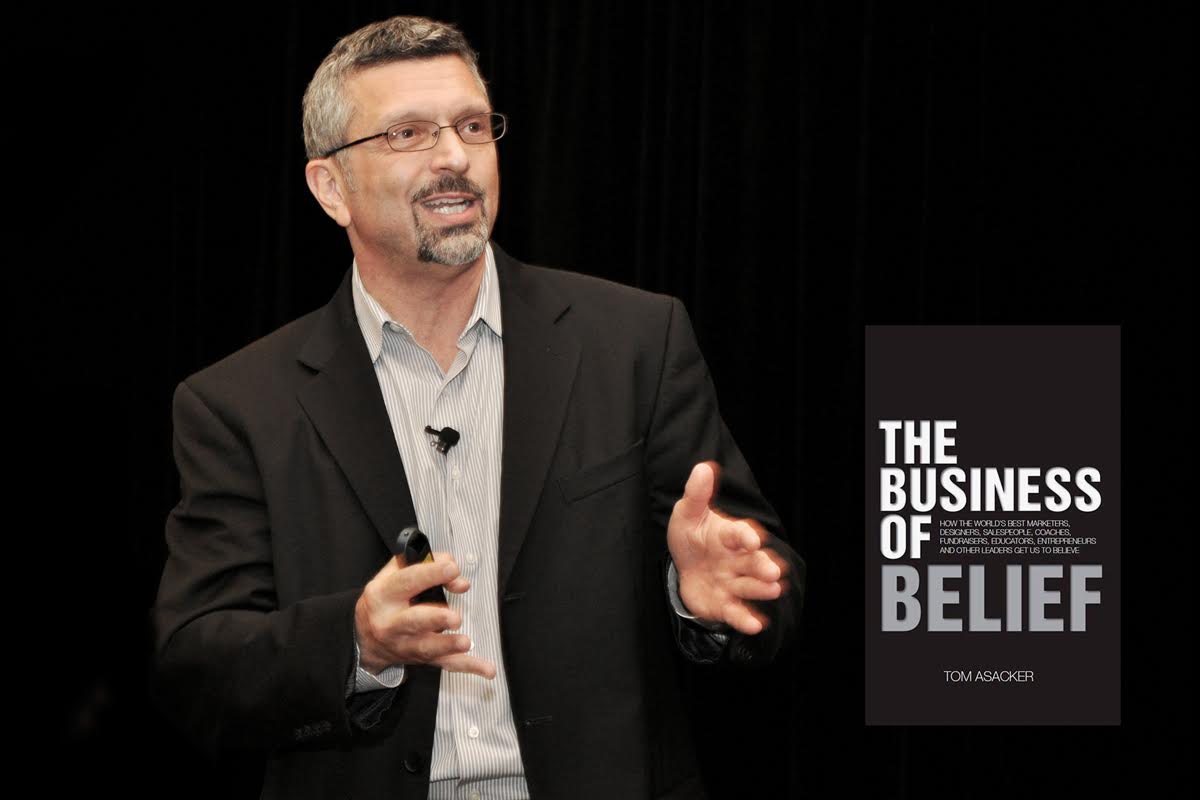I was first introduced to Tom a number of years ago when he and I were on the same contributor panel and I’ve always been taken by four qualities that come out time and again in his work: his call-it-the-way-it-is approach; his extraordinary ability to condense whole systems to meme-length summaries; his relentless search for new form; and above all his humanity and clarity.
Tom’s fifth book, The Business of Belief is about stories, dots and history (you’ll see why below). It did what I knew Tom would do: took a space that seemed finite and broadened the consideration-set to include ideas and insights that were very revealing. Reading it prompted me to seek a deeper understanding of what’s playing on Tom’s mind about beliefs and brands.
Here’s some of the highpoints from our conversation:
1. Wishes drive beliefs
Tom: The word “belief” comes from the Middle English “lief,” which means to wish. Belief is simply a working assumption about something or someone … driven by what we would wish something to be.
2. People forge meaning out of partial information
Tom: Stories are powerful because they express our beliefs. We have past experiences, which we spin into a coherent story, and revise when necessary, to rationalize previous actions and make us feel good about ourselves, our associations and decisions. I refer to this as “connecting the dots”. Some brands are very good at presenting us with “dots” — through their varied and evolving communications and behaviors — such that we create a coherent and motivating whole. We all become the stories we tell ourselves. You are not your history.
3. Brands are actually in the business of generating meaning
Tom: People’s expectations change, because their experiences in the marketplace change and their desires evolve. Great brands lead [that] change. It’s a process of continuous learning, discovery and creation of new meaning, which drives profitable growth and adds value to the lives of customers, employees, owners, partners, and the community. Apple is the classic example.
4. Finances measure opinions
Tom: Financial measurement is simply a way to gauge how well a brand is executing on its opinions, on its theories about how the marketplace is evolving and its unique role in that evolution.
5. Identity is not the same as narrative
Tom: Narrative is something the mind invents from past experiences. Identity is the result of what someone does and creates in the here and now. What’s Nokia’s identity? They were a manufacturer of paper, then cables, then rubber boots. They were also the world’s leading manufacturer of mobile phones. Those were their identities. Their identity today is much different. You are what you do, not who you were.
6. Brands die because they forget how to dream and customers lose belief in them
Tom: Customers lose belief when their desires are not being met, or when something or someone else is better at stimulating and satisfying those latent desires. When brands forget how to dream, the passion for the possible and for the customer typically goes with it.


